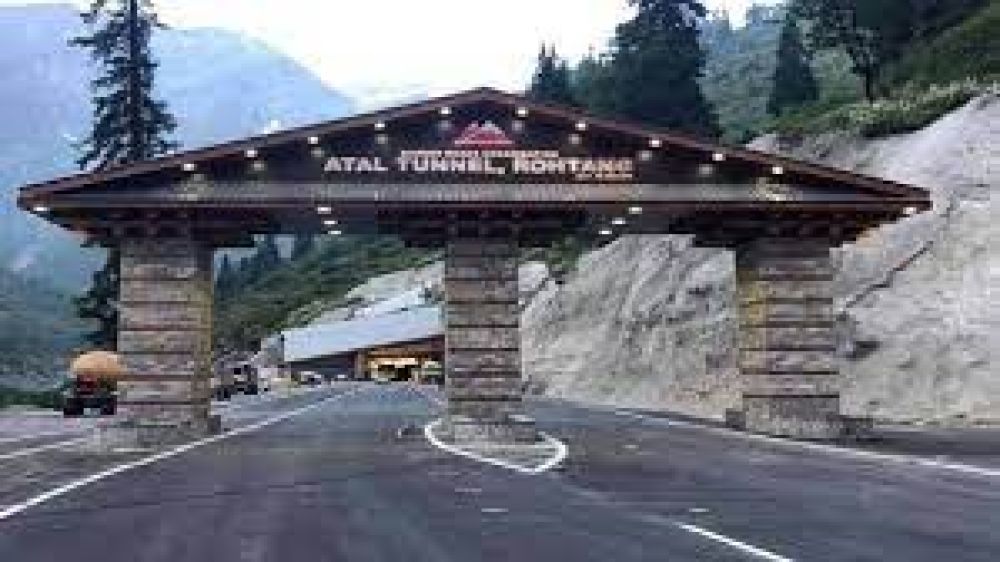

The Atal Tunnel, formerly known as the Rohtang Tunnel, is a remarkable feat of engineering that serves as a vital link between the Kullu Valley and the Lahaul and Spiti Valley in Himachal Pradesh, India. Named in honor of former Prime Minister Atal Bihari Vajpayee, the tunnel's construction began in June 2010 and was inaugurated on October 3, 2020, by Prime Minister Narendra Modi.
The concept of a tunnel beneath the Rohtang Pass was first conceived in 1983, with the goal of providing an all-weather route to the remote regions of Himachal Pradesh. Before the construction of the Atal Tunnel, the Rohtang Pass was the only route connecting Manali to the Lahaul and Spiti Valley, which was often closed during the winter due to heavy snowfall. This made life extremely challenging for the inhabitants of these regions.
After multiple feasibility studies and project planning phases, the Border Roads Organization undertook this ambitious project to enhance connectivity and boost the regional economy. The Atal Tunnel is the world's longest highway tunnel above 10,000 feet, measuring 9.02 kilometers. It is designed to handle approximately 3,000 cars and 1,500 trucks per day with a maximum speed of 80 km/h.
Since its inauguration, the Atal Tunnel has had a considerable impact on the tourism industry. It has revolutionized travel to the Lahaul and Spiti Valley, making it accessible throughout the year and significantly reducing travel time. Tourists can now explore the region's stunning landscapes and unique culture without the previous seasonal limitations.
The tunnel has also created new opportunities for adventure tourism, such as trekking, skiing, and mountain biking. It has become an attraction in its own right, with many tourists eager to experience the engineering marvel and the mesmerizing views it provides access to.
The opening of the Atal Tunnel has resulted in a new trend of "tunnel tourism," where the tunnel itself becomes a primary attraction for visitors. Tourists are flocking to Manali not just for its traditional draws, but also to travel through this modern wonder.
Moreover, with improved accessibility, there has been a rise in sustainable and off-season tourism. Visitors are now spreading their travel across different months, reducing the pressure on local infrastructure during the peak season, and ensuring that the economic benefits of tourism are distributed more evenly throughout the year.
Additionally, ecotourism is gaining traction, with an emphasis on preserving the pristine natural beauty of the region. The infrastructure development around the tunnel has been carefully planned to minimize environmental impact, ensuring that tourists can enjoy the natural splendor without compromising the delicate ecosystem.
The Atal Tunnel is not just an architectural and engineering landmark but also a transformative development for tourism in Himachal Pradesh. Its existence has broadened horizons for travelers and locals alike, bringing a new era of connectivity, economic growth, and exposure to this beautiful and rugged part of India. Whether it's the prospect of a serene holiday amidst snow-capped mountains or the thrill of an adventurous journey, the Atal Tunnel stands as a gateway to unparalleled experiences in the majestic Himalayas.